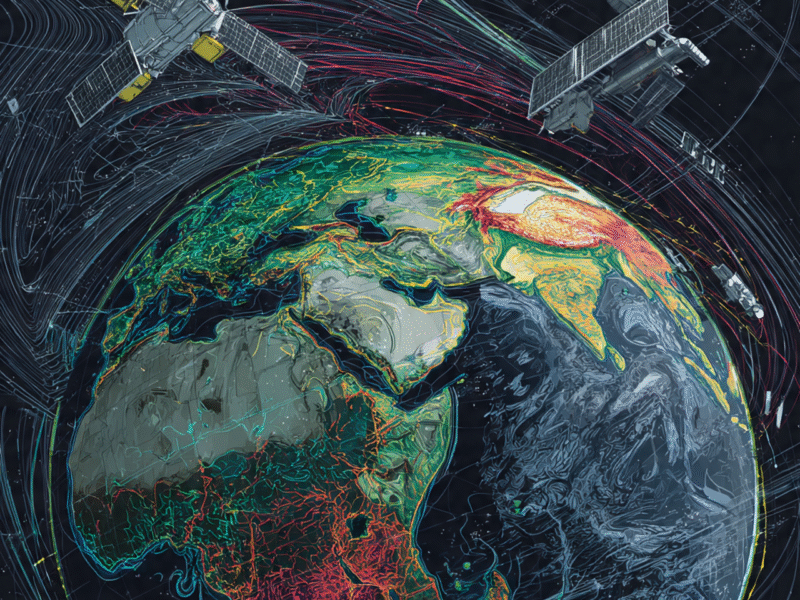Today, I am presenting to you a unique and comprehensive piece on the revolutionary concept of reusable rockets, being written for the first time in the world.

This writing will tell you how reusable rockets are fundamentally transforming the cost, innovation, and long-term accessibility of space travel. If you like this material, please let us know, and if you need more details on any specific topic, you can contact us.
🚀 The Reusable Rocket Revolution: Redefining Space Travel
Reusable rockets have brought about a fundamental change in the space industry that has reshaped all aspects of space travel. Unlike traditional rockets, which were discarded after a single use, reusable rockets can be used multiple times, reducing the cost of space travel by up to 90%. This change is not only economically revolutionary, but it has also drastically altered the frequency and accessibility of space travel. SpaceX’s Falcon 9 rocket proved that it is possible to safely return rockets to Earth and reuse them, a feat previously thought impossible. This technology has not only reduced launch costs but has also significantly decreased the preparation time for space missions, leading to an extraordinary increase in the pace of space travel.
Reusable rocket technology has also completely transformed the business model of the space industry. Previously, space missions were extremely expensive and only government agencies could afford them, but now private companies, research institutions, and even small countries can regularly conduct space missions. This change has introduced the space industry as a profitable business field, opening doors for new investors and business opportunities. Companies like SpaceX, Blue Origin, and Rocket Lab are now regularly performing commercial launches, which not only deliver satellites to space but are also advancing projects for space tourism and interplanetary research.
The environmental aspects of reusable rockets are also extremely important. Unlike traditional rockets, which would fall into the ocean after a single use causing environmental pollution, reusable rockets have significantly reduced space debris. Furthermore, reusable rockets allow for more efficient use of resources required during manufacturing, reducing the carbon footprint of the space industry. The first stages of SpaceX’s Falcon 9 rockets have been reused more than ten times, which is a major achievement not only economically but also environmentally.
Reusable rocket technology has also raised the safety standards of space travel. Unlike traditional rockets, which had to be built from scratch for each new mission, reusable rockets undergo comprehensive inspection and maintenance after each use, increasing their reliability. SpaceX has introduced advanced guidance systems, redundant engines, and sophisticated landing technologies in its Falcon 9 rockets, which not only ensure successful landings but also improve overall mission safety.
The biggest impact of reusable rockets is that they have paved the way for space travel to become an everyday activity. As this technology matures further, the cost of space travel will decrease even more, making it accessible to more and more people. This change will not only promote space tourism but has also brought dreams of space research, space manufacturing, and interplanetary colonization closer to reality. This revolution in reusable rockets is truly providing a new foundation for humanity’s space future.
💰 Revolutionary Change in Space Travel Costs: Space Travel Within Everyone’s Reach
Reusable rockets have brought about a revolutionary change in the cost of space travel that has altered the economic axioms of the space industry. In traditional space missions, launch cost was the biggest barrier, reaching hundreds of millions of dollars. By introducing reusable technology, SpaceX’s Falcon 9 rocket has reduced launch costs by up to 90%, completely changing the economics of space travel. A traditional rocket launch cost between $60 and $100 million, while a reusable Falcon 9 launch costs only $50 to $60 million, and when the same rocket is used multiple times, this cost decreases further. This reduction is not only crucial for commercial launches but has also made space travel accessible for scientific research and educational institutions.
Reusable rockets have also fostered competition in the space industry, leading to further price reductions. Projects like Rocket Lab’s Electron rocket, Blue Origin’s New Glenn, and other reusable launch vehicles have created healthy competition in the space launch market. This competition has not only caused prices to fall but has also accelerated innovation. Every company is trying to improve the efficiency, reliability, and reusability of its rockets, benefiting the entire industry. This competition has accelerated the emergence of new technologies, such as SpaceX’s Starship project, which is based on a fully reusable system and will have a much lower cost than current rockets.
Reusable rockets have created new opportunities for the small satellite industry. Due to the high cost of traditional rockets, launching small satellites was economically impractical, but with the advent of reusable rockets, the concept of ride-share missions has become common, where multiple small satellites are sent into space on a single rocket. Through SpaceX’s SmallSat Rideshare Program, small satellites can be launched for just $1 million, which was previously impossible. This change has opened the doors of space research for universities, research institutions, and small countries.
The economic impacts of reusable rockets are not limited to launch costs. This technology has transformed the complete economic ecosystem of the space industry. Improvements in manufacturing processes, supply chain optimization, and increased operational efficiency have reduced overall costs. SpaceX has adopted vertical integration in rocket manufacturing, allowing it to produce most components itself and reduce dependence on suppliers. This approach has not only reduced costs but has also increased production speed.
The economic success of reusable rockets can be gauged from the fact that the first stages of SpaceX’s Falcon 9 rockets have successfully landed over 150 times and have been reused. This is not only a technical achievement but also clear evidence of economic efficiency. As this technology matures further, the cost of space travel will decrease even more, creating new opportunities for expansion in all sectors of the space industry.
🔬 Innovation and Technological Advancement: Setting New Standards
Reusable rocket technology has established new standards for innovation in the space industry. The integration of advanced grid fins, cold gas thrusters, and precision guidance systems in SpaceX’s Falcon 9 rocket has made the controlled descent and landing of rockets possible. These technologies are not only essential for reusable rockets but have also changed our thinking about overall rocket design. Blue Origin’s New Shepard rocket has given practical shape to the concept of vertical takeoff and vertical landing (VTVL), paving the way for suborbital space tourism. These technological breakthroughs are not only impressive but have also provided technical foundations for future space missions.
The development of reusable rockets has promoted improvements in materials science. Reusable rockets require materials that can withstand extreme temperatures, pressures, and mechanical stress. SpaceX has developed special alloys for Merlin engines that can endure high temperatures and pressures. Improvements in thermal protection systems have ensured the protection of heat shields during rocket re-entry. These materials advancements are not only useful for the space industry but also have Earth-based applications in sectors like aviation, automotive, and energy.
Advancements in propulsion systems are the foundation of reusable rockets’ success. SpaceX’s Raptor engine, which runs on methane, has set new standards for rocket propulsion. This engine uses a full-flow staged combustion cycle, which is highly efficient and can be reused multiple times. Blue Origin’s BE-4 engine has also achieved similar breakthroughs. These propulsion advancements are not only essential for reusable rockets but are also important for future interplanetary missions, especially those that will require in-situ resource utilization.
Advancements in guidance, navigation, and control systems are a crucial aspect of reusable rockets’ success. SpaceX has developed advanced flight computers and sensors that enable precise rocket landings. These systems control the rocket’s position, velocity, and orientation while processing real-time data. Autonomous landing technology has enabled precise landings on drone ships, which is an engineering masterpiece. These technological advancements are not only essential for reusable rockets but are also providing a technical basis for future autonomous space missions.
The development of reusable rockets has introduced new methods of testing and validation. SpaceX has developed an extensive testing program, including multiple test flights, destructive testing, and continuous monitoring. This approach not only reduces technical risks but also enables rapid iteration and continuous improvement. Blue Origin has also adopted a similar testing methodology, involving a gradual expansion of the flight envelope. These testing protocols are not only important for reusable rockets but are establishing best practices for the overall aerospace industry.
🌍 Expanding Global Access: Space Travel for Every Country
Reusable rockets have expanded global access to space travel so dramatically that they have vastly widened the geographical scope of the space industry. Traditional space missions were limited to a few developed countries, but with the arrival of reusable rockets, developing countries are also playing an active role in space research. SpaceX’s ride-share programs have made it possible for small countries to send their satellites into space, leading to an extraordinary increase in global space participation. India, Brazil, South Africa, and several other countries are now running their space programs through commercial launch services, which are economically viable thanks to reusable rockets.
Reusable rockets have opened new doors to space research for educational institutions. Universities and research institutes can now send their experiments to space via commercial launches, promoting a participatory approach in scientific research. Students and researchers from leading universities like MIT and Stanford are now regularly conducting space experiments, which were previously limited to established space agencies. This change is not only accelerating scientific discovery but has also encouraged the new generation to build careers in space science.
The growth of the commercial space industry has also fostered global entrepreneurship. The low cost of reusable rockets has enabled the establishment of new space startups that are entering the market with innovative solutions. Companies like Rocket Lab, Relativity Space, and Astra have emerged with business models based on reusable rockets, providing specialized services. This entrepreneurial ecosystem exists not only in developed countries but is also spreading to developing countries, where new space startups are emerging as sources of economic development and technological innovation.
Reusable rockets have created new opportunities for international cooperation. Commercial launch providers are promoting technical cooperation and knowledge sharing between different countries. SpaceX has established numerous international partnerships where technical expertise and best practices are exchanged. This cooperation is not only accelerating technological development but is also helping in the integration of the global space community. The travel of astronauts from different countries to the International Space Station via commercial crew missions is the best example of this cooperation.
The most important aspect of the global access enabled by reusable rockets is that it has promoted technology transfer. Countries working with commercial launch providers are acquiring technical knowledge and operational expertise, which is helping them develop their own space programs. This technology transfer is not only helping the growth of the space industry but is also promoting overall technological development, benefiting various economic sectors.
🛡️ Sustainability and Environmental Protection: The Space Industry’s New Direction
Reusable rockets have elevated the sustainability standards of the space industry to new heights. Unlike traditional rockets, which increased space debris after a single use, reusable rockets have played a key role in protecting the space environment. The successful landings and reuses of SpaceX’s Falcon 9 first stages have significantly reduced space debris, which is extremely important for the long-term sustainability of the space environment. This change is not only essential for protecting existing space infrastructure but is also providing a sustainable framework for future space activities.
Reusable rockets have reduced the environmental impact of manufacturing processes. Unlike traditional rockets, which had to be built from scratch for each new mission, the multiple uses of reusable rockets have significantly reduced the consumption of raw materials. According to SpaceX data, reusing a Falcon 9 first stage ten times saves the aluminum and other materials required during manufacturing, playing an important role in environmental conservation. This sustainability is important not only economically but also environmentally.
Improvements in propellant systems have reduced the environmental footprint of reusable rockets. The fact that SpaceX’s Raptor engine runs on methane is an environmental milestone, as methane has less harmful effects compared to traditional rocket fuels. Blue Origin’s BE-4 engine has also used clean-burning propellants. These changes are not only reducing pollution during launch operations but are also raising the environmental standards of the overall aerospace industry.
Reusable rockets have established new standards for space traffic management. The controlled descent and precise landing of reusable rockets have increased the predictability of space operations, which has helped improve space traffic management systems. This predictability is not only important for protecting existing space assets but is also essential for planning and coordinating future space activities. SpaceX has developed automated collision avoidance systems that automatically perform maneuvers to avoid collisions with other space objects during reusable rocket operations.
An important aspect of reusable rockets’ sustainability is their end-of-life management. Both SpaceX and Blue Origin have developed comprehensive plans for how reusable rockets will be disposed of when they reach the end of their operational life. These plans include materials recycling, component reuse, and environmentally responsible disposal. This approach is not only setting a new standard for the aerospace industry but is also providing a model for other industries.
🌌 Future Plans and Possibilities: A New Era of Space Travel
The success of reusable rockets has illuminated new possibilities and plans for the future of space travel. SpaceX’s Starship project, which is a fully reusable transportation system, could bring revolutionary changes to all aspects of space travel. Starship is being designed not only for Earth’s orbit but also for travel to the Moon, Mars, and other planets, with a cost far lower than current systems. This project will not only be a technical achievement but will prove to be a cornerstone for humanity’s interplanetary future.
Reusable rockets have created new opportunities for space-based manufacturing. The low cost of reusable rockets has made microgravity manufacturing economically viable. Companies like Varda Space Industries and Space Forge are now developing space-based manufacturing projects focused on producing items impossible to make on Earth. These projects will not only promote scientific discovery but will also create new industrial capabilities, benefiting various economic sectors.
Reusable rockets have laid the foundation for the space tourism industry. SpaceX’s Crew Dragon missions, Blue Origin’s New Shepard flights, and Virgin Galactic’s SpaceShipTwo have begun the era of commercial space tourism. As the cost of reusable rockets decreases further, space tourism will become more affordable, causing this industry to grow rapidly. This change will not only create economic opportunities but has increased public interest and engagement, which is extremely important for the long-term growth of the space industry.
Reusable rockets have initiated a new era of interplanetary research. Sample return missions to Mars, scientific outposts on the Moon, and asteroid exploration missions can be made affordable through SpaceX’s Starship. These missions will not only increase scientific knowledge but will also provide technical foundations for humanity’s interplanetary future. The commercial partners of NASA’s Artemis program, including SpaceX, are planning to establish a sustainable presence on the Moon using reusable technology.
The biggest future possibility enabled by reusable rockets is space-based solar power. The low cost of reusable rockets has made the concept of orbital power stations economically viable. These stations could collect solar energy and beam it to Earth, providing a permanent source of clean energy. This project could not only revolutionize the energy sector but could also play an important role in the fight against climate change.
🤝 Global Cooperation and Partnership: A New International Model
Reusable rockets have introduced new models of global cooperation in the space industry. Commercial launch providers have promoted technical cooperation and joint missions between different countries. SpaceX has established partnerships with NASA, ESA, JAXA, and other space agencies, where reusable technology is exchanged and joint missions are planned. This cooperation is not only strengthening technical capabilities but is also improving international relations.
Reusable rockets have created new opportunities for capacity building in developing countries. Countries working with commercial launch providers are acquiring technical training, operational experience, and engineering expertise. SpaceX has arranged training programs for engineers from different countries, while Blue Origin has started international educational initiatives. These efforts are not only strengthening global space capability but are also helping in the global distribution of technological development.
Reusable rockets have promoted standardization in the commercial space industry. The harmonization of technical standards and operational procedures between different countries and companies has increased the efficiency of global space operations. SpaceX’s launch interfaces, Blue Origin’s docking mechanisms, and other commercial standards have ensured international compatibility. This standardization not only helps reduce costs but also improves safety and reliability.
Reusable rockets have established new international frameworks for space resource utilization. Projects on lunar resources, asteroid mining, and space-based energy are being worked on between commercial companies and different countries. This cooperation is not only helpful in solving technical challenges but is also assisting in the development of legal and ethical frameworks for space activities.
The most important international aspect of reusable rockets is that they have strengthened the concept of peaceful space exploration. Joint missions and technical cooperation between different countries through commercial companies have promoted mutual understanding and peaceful cooperation. This collaboration is not only important for space exploration but also has positive implications for international relations on Earth.
🌟 Impacts on Humanity’s Future: A New Cosmic Vision
Reusable rockets have fundamentally transformed the vision for humanity’s future. This technology has not only made space travel affordable but has also brought humanity’s dreams of an interplanetary future closer to reality. The vision of SpaceX founder Elon Musk to establish a human settlement on Mars, which once seemed like science fiction, has now gained technical feasibility thanks to reusable rockets. This vision is not only a technical challenge but is an important aspect of humanity’s long-term survival and prosperity.
Reusable rockets have had profound effects on public awareness and education. Live streams of SpaceX’s rocket launches, dramatic footage of successful landings, and the technical achievements of reusable rockets have increased public interest. This engagement is not only generating public support for the space industry but has also attracted the new generation to STEM education. Enrollment in aerospace engineering programs at universities has increased, and a new generation of engineers is working on reusable technology.
Reusable rockets have opened new spheres of economic opportunities. The emergence of industries like space tourism, space mining, space manufacturing, and space-based services has created new business opportunities. This economic expansion is not limited to the space industry but has also promoted related industries on Earth. The development of technologies like advanced materials, propulsion systems, and robotics has benefited various economic sectors.
The deepest impact of reusable rockets is that they have broadened humanity’s perspective. When people see space travel becoming an everyday activity through reusable rockets, their perspective on Earth and the cosmos changes. This broad-mindedness is not only important for personal growth but is also essential for solving global challenges. This revolution in reusable rockets is truly providing a new foundation for humanity’s collective future.


